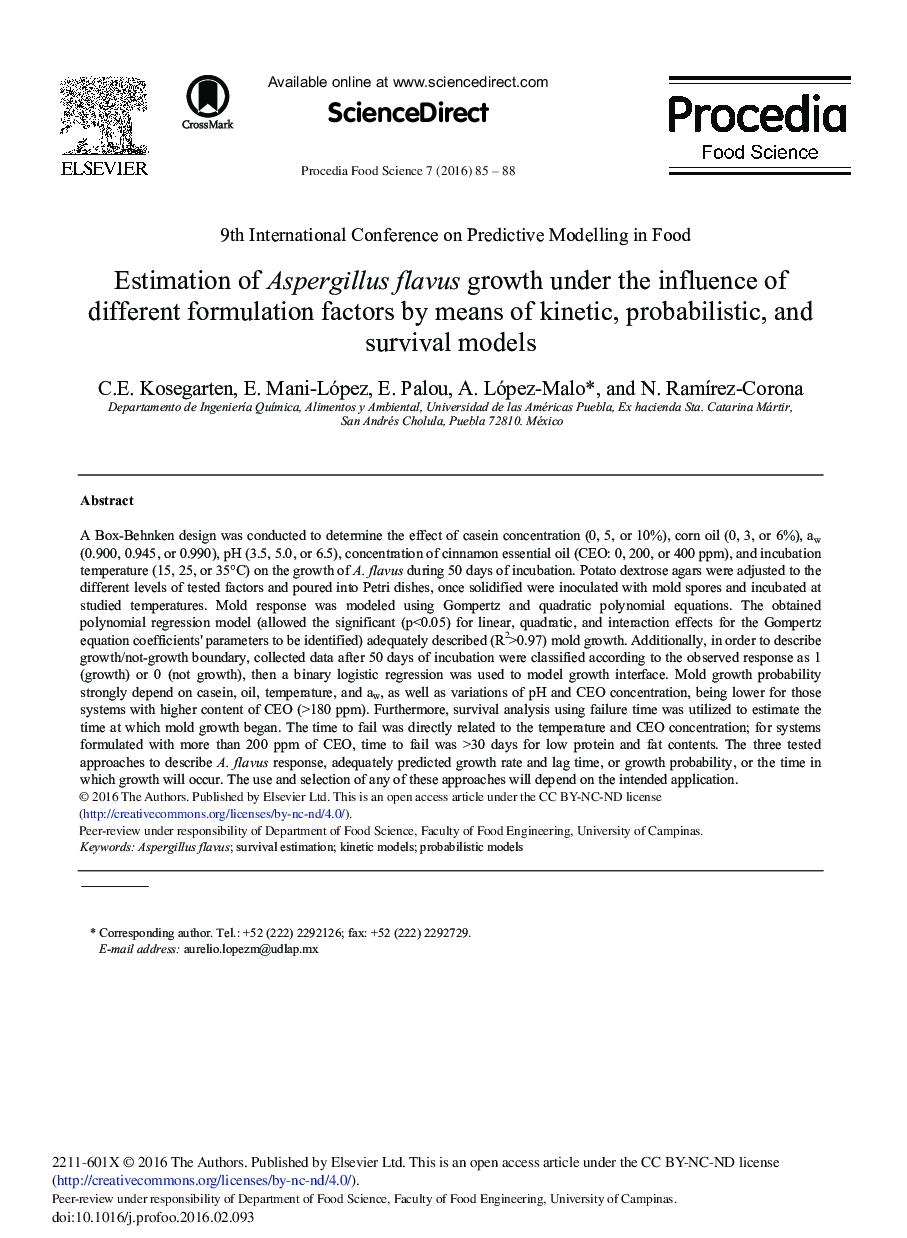| کد مقاله | کد نشریه | سال انتشار | مقاله انگلیسی | نسخه تمام متن |
|---|---|---|---|---|
| 1266056 | 1496849 | 2016 | 4 صفحه PDF | دانلود رایگان |
A Box-Behnken design was conducted to determine the effect of casein concentration (0, 5, or 10%), corn oil (0, 3, or 6%), aw (0.900, 0.945, or 0.990), pH (3.5, 5.0, or 6.5), concentration of cinnamon essential oil (CEO: 0, 200, or 400 ppm), and incubation temperature (15, 25, or 35 °C) on the growth of A. flavus during 50 days of incubation. Potato dextrose agars were adjusted to the different levels of tested factors and poured into Petri dishes, once solidified were inoculated with mold spores and incubated at studied temperatures. Mold response was modeled using Gompertz and quadratic polynomial equations. The obtained polynomial regression model (allowed the significant (p<0.05) for linear, quadratic, and interaction effects for the Gompertz equation coefficients’ parameters to be identified) adequately described (R2>0.97) mold growth. Additionally, in order to describe growth/not-growth boundary, collected data after 50 days of incubation were classified according to the observed response as 1 (growth) or 0 (not growth), then a binary logistic regression was used to model growth interface. Mold growth probability strongly depend on casein, oil, temperature, and aw, as well as variations of pH and CEO concentration, being lower for those systems with higher content of CEO (>180 ppm). Furthermore, survival analysis using failure time was utilized to estimate the time at which mold growth began. The time to fail was directly related to the temperature and CEO concentration; for systems formulated with more than 200 ppm of CEO, time to fail was >30 days for low protein and fat contents. The three tested approaches to describe A. flavus response, adequately predicted growth rate and lag time, or growth probability, or the time in which growth will occur. The use and selection of any of these approaches will depend on the intended application.
Journal: Procedia Food Science - Volume 7, 2016, Pages 85–88
